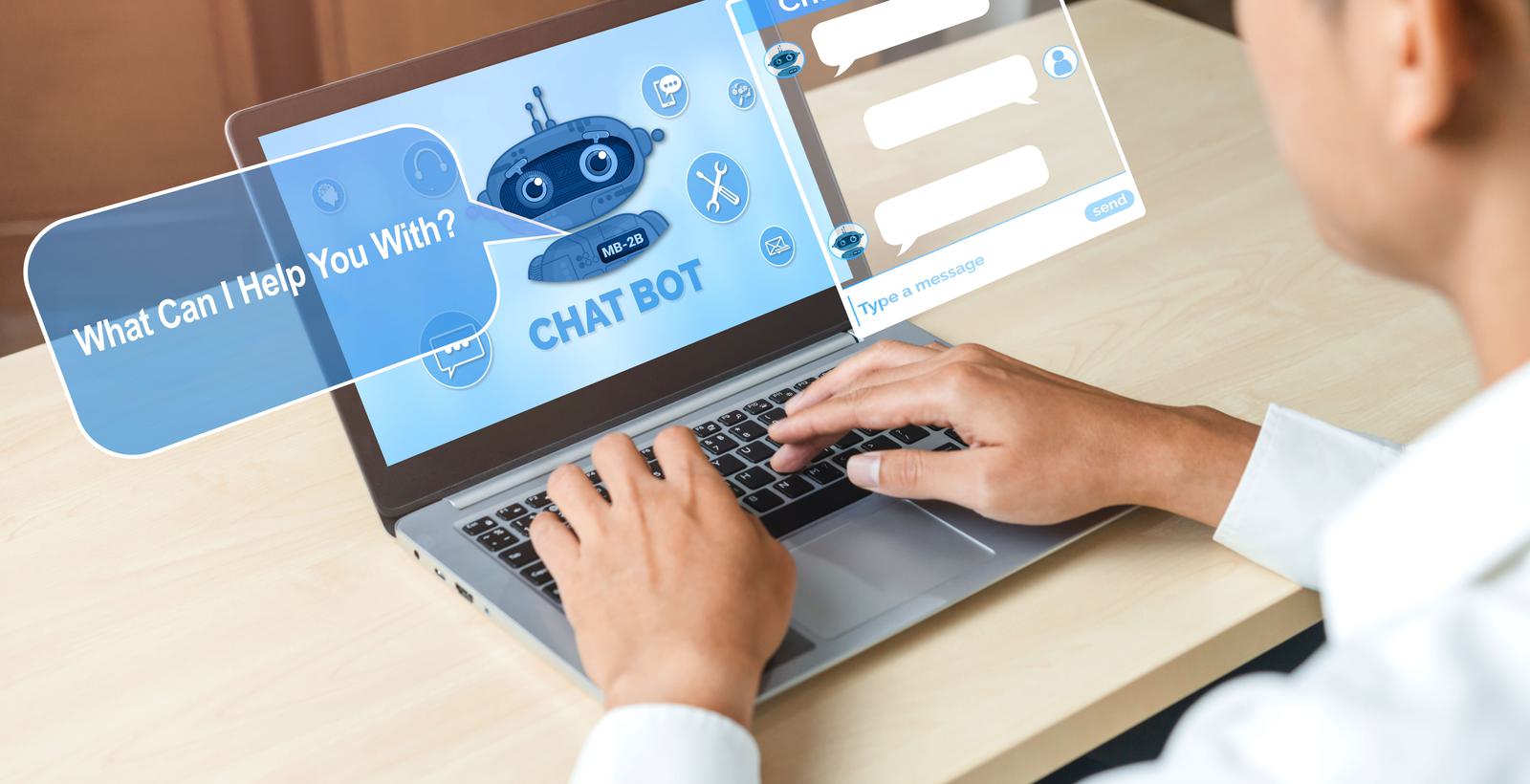B2B chatbots: Not a one-way conversation
As the technology and capabilities surrounding chatbots grow, so too do their uses

What do same-day shipping, video and music streaming services, virtual assistants, and chatbots have in common?
They’re all examples of the growing demand for instant information, entertainment, and assistance.
Chatbots, in particular, have grown in popularity in recent years as more organizations bolster their digital presence and place greater emphasis on providing strong customer service. Now, with the advancement of artificial intelligence (AI) and machine learning, chatbots can do more than ever before.
Applicable in a wide range of industries and with a diverse set of features, chatbots are a great tool for any business to improve their conversational marketing and customer service capabilities.
Why use a chatbot?
Simply put, chatbots can save time and money by automating processes that would otherwise require a human behind the scenes (or on the phone). But more than that, they can provide instant information and support to users, regardless of where they are or what time it is.
“Chatbots are not only increasing in popularity, but they’re also improving in functionality and in their ability to address the needs of the end-user as quickly and reliably as possible,” says Steve Lendt, Director of Engagement and Analytics at Motum B2B. “They help engage end-users faster and help make your website perform like a live operation.”
A recent study says that the market size of conversational AI is expected to reach USD $1.3 billion by 2025, and 75-90% of queries are projected to be handled by chatbots by 2024, which can help save up to 50% in customer service costs.
Now, more businesses are attempting to reengineer their chatbots to feel more natural and human-like with the help of machine learning, AI, and natural language processing.
With the development of new technology, chatbots can build stronger customer relationships through personalized customer experience, voice chat capabilities, and more organic conversations.
Powerfully personal
So, what can these handy programs do with their newfound AI and processing power?
A lot more than you think.
“Intercom, the chatbot program we're partnered with, recently added a feature called Switch that allows the ability to go from being on hold in a phone call to an SMS chatbot, where you can ask your questions and have an automated interaction,” says Lendt. “You could get your questions answered through the chatbot rather than having to wait on hold to talk to somebody, so it’s faster.”
Among seamless voice/chat switching, chatbots can also conduct surveys, give product tours, open apps, collect customer information, and more.
But perhaps most importantly, is their ability to streamline and personalize the customer journey by using data to determine where the customer is in their journey, their level of experience or knowledge of the offering, and important demographic data.
“A lot of people think that the only use of a chatbot is to have to talk to a live person, which I think is useful in many cases, but if you don't offer a way for users to navigate themselves too, I think that's a missed opportunity,” says Lendt.
 Incorporating AI and machine learning into chatbots can improve user experience
Incorporating AI and machine learning into chatbots can improve user experience
Chatbots and B2B, and what NOT to do
It’s easy enough to purchase a chatbot program for your site and haphazardly throw it on your homepage, but be warned: a poorly implemented chatbot can create a poor user experience and distance your customers from your brand.
While chatbots are a useful tool for obtaining data, that shouldn’t be the sole objective, and there’s a fine line between “just right” and “too much”. Users will also be turned off from your chatbot if it appears to only request data without providing any useful information or feedback.
“When a chatbot is poorly programmed or it’s only there to capture information without helping the user, I think that makes a poor chatbot experience,” says Lendt. “When a chatbot can anticipate the user’s questions and help before asking for data, it provides a better user experience.”
In the B2C realm, the top industries using chatbots are real estate, travel, education, healthcare, and finance, but the B2B side has their own unique uses for them.
Like B2C chatbots, the primary goal of a B2B chatbot is to guide the user through a conversation to the information they’re looking for, but they can also help with:
- Lead qualification: The chatbot can ask questions to guide the user to the product or service most relevant to them, without spending time shifting through irrelevant content.
- Lead nurturing: Especially when coupled with AI, chatbots can help build relationships and establish brand loyalty and trust by getting to know specific users.
- Data collection: Automating data collection through chatbots can provide insights into audience demographics, buying behaviours, changing or upcoming trends, and more.
When designing a chatbot for B2B audiences, it’s important to recognize that each industry niche is different and has a different audience, so some features that would be relevant for one audience may not be right for another.
“The key is to first identify the purpose of the interaction, and then construct the automation or chatbot around that,” says Lendt. “Remember that it's not necessarily just the automated chat feature we’re using it for; it could have a blend of live chat and custom automation or chatbot working together, because that's what we find is still relevant to the B2B space.”
What’s in the future?
We can expect to see chatbots become more sophisticated with advanced features in the coming years as more companies try to differentiate themselves with stronger and more personalized customer service.
They won’t just be used to help customers, either: more companies will start using them internally for multiple uses, including training new employees, technical assistance, or with HR-related tasks and transactional functions.
“I think there's a bright future for chatbots in terms of behaving like a real person, but with the features of a chatbot,” says Lendt. “They’ll be able to understand you, start learning from you and asking you questions, because that's what AI is about.”
Here at Motum B2B, we have a method for developing chatbots that work for our clients and their audiences. It starts with the purpose: what are the initial conversations you want to have with your prospects or potential customers, and how can we help them find what they're looking for as fast as possible?
Once we do that, we can begin implementing a chatbot that makes the customer journey a smooth and efficient ride.
Contact us to learn more.
While you’re here, did you know that we’re hiring for a Digital/Web Analytics Specialist? Learn more about the role and apply here.